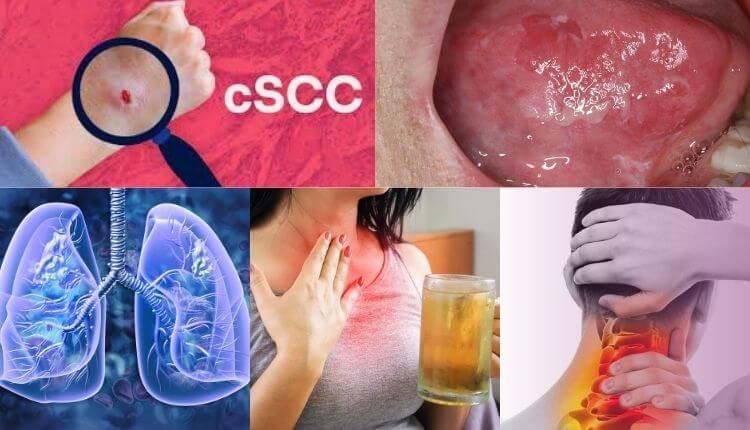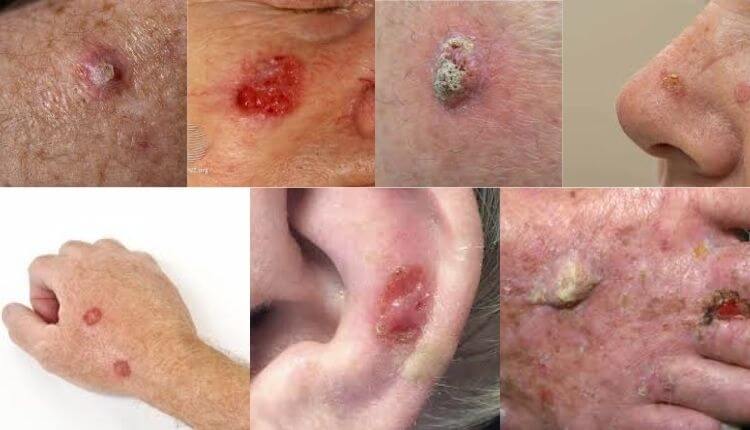- Plot No. 361/3074 & Plot No 437/3134, Patrapada, BBSR
- +91 9040017001
- +91 8630400500
Understanding Squamous Cell Carcinoma: A Patient’s Guide
What is Squamous Cell Carcinoma?
Squamous Cell Carcinoma is a malignant tumor that arises when squamous cells begin to grow uncontrollably. It usually develops as a result of prolonged exposure to ultraviolet (UV) radiation from the sun or tanning beds, but it can also occur in areas not typically exposed to the sun.
Types of Squamous Cell Carcinoma:
- Cutaneous Squamous Cell Carcinoma (cSCC):
- Occurs on the skin, especially sun-exposed areas.
- Most common type of SCC.
- Mucosal SCC:
- Occurs in mucous membranes (e.g., mouth, throat, esophagus, anus, cervix).
- Often associated with HPV infection.
- SCC of the Lung:
- A type of non-small cell lung cancer (NSCLC).
- Typically linked to smoking.
- SCC of the Esophagus:
- Often linked to alcohol, smoking, or chronic acid reflux.
- SCC of the Head and Neck:
- Includes the mouth, nose, sinuses, throat, and larynx.
- May present as a non-healing sore or difficulty swallowing/speaking.

Causes of Squamous Cell Carcinoma:
- UV Radiation: Chronic sun exposure and use of tanning beds.
- Weakened Immune System: Transplant patients or those on immunosuppressants are at higher risk.
- Chronic Inflammation or Injury: Burn scars, long-standing ulcers, or other skin injuries.
- Human Papillomavirus (HPV): Certain strains can increase the risk, especially in the genital region.
- Chemical Exposure: Prolonged exposure to arsenic and industrial chemicals.
Where Does It Occur?
SCC can appear anywhere on the body, but is most common in sun-exposed areas such as:
- Face
- Ears
- Lips
- Scalp (in bald individuals)
- Hands
- Neck
- Forearms

Less commonly, SCC can also develop in:
- Mucous membranes (mouth, throat)
- Esophagus
- Lungs
- Genital and anal areas
- Internal organs (rare, and typically associated with HPV or chronic disease)
What Does It Look Like?
- A rough, scaly red patch
- A firm, red nodule
- An open sore that doesn’t heal
- A wart-like growth that may bleed or crust
- A persistent, thickened, rough skin area
Symptoms of SCC:
- Pain or tenderness at the site
- Bleeding or crusting
- Rapid growth over weeks or months
- Non-healing ulcer
Diagnosis:
- Physical Examination
- Skin Biopsy: A sample of the lesion is taken for lab analysis.
- Imaging Tests: (CT, MRI) in advanced cases to check spread to lymph nodes or organs.
Treatment Options:
- Surgical Removal (most common)
- Excisional surgery: Cutting out the tumor and surrounding skin.
- Mohs surgery: Layer-by-layer removal, best for high-risk areas.
- Cryotherapy: Freezing the cancer cells with liquid nitrogen.
- Topical Chemotherapy: Creams like 5-fluorouracil for superficial cases.
- Radiation Therapy: For inoperable tumors or where surgery is risky.
- Systemic Therapy:
- Immunotherapy: Drugs like cemiplimab or pembrolizumab.
- Chemotherapy: For advanced, metastatic SCC.
Prognosis:
- Very high cure rate when caught early.
- Can become invasive or metastatic if left untreated, spreading to lymph nodes or organs.
- Regular skin checks are crucial for prevention and early detection.
Prevention Tips:
- Use broad-spectrum sunscreen (SPF 30+)
- Wear protective clothing and hats
- Avoid tanning beds
- Get regular skin exams
- Treat precancerous lesions like actinic keratosis early
Top Picks from This Blog
👉 Cervical Cancer Screening: Importance of Pap Smear and HPV Tests
👉 Genetic Testing for Cancer Risk: Is It Right for You?
👉 Mammograms in Bhubaneswar: When to Start and How Often to Get Checked
👉 Breast Cancer Screening When and How Often Should You Get a Mammogram
👉 Lipid Profile Tests: Understanding Normal Ranges, Preparation, and Post-Analysis Guidance
👉 Prolife Diagnostics: Your Trusted Cancer Testing Lab in Bhubaneswar
👉 Understanding Pancreatic Cancer: Symptoms, Causes, Diagnosis, and Treatment
👉 Understanding Breast Cancer – The Role of Mammography in Early Detection
👉 Thyroid Cancer Awareness: Know the Signs and Screening with Prolife Diagnostics
👉 Understanding Gynecologic Cancers: Signs and Symptoms to Raise Awareness
👉 All About Breast Cancer: What You Need to Know About Risks, Signs, and Staying Healthy
👉 Brain Tumors: Signs, Risks & How They’re Diagnosed – A Guide for Every Family
